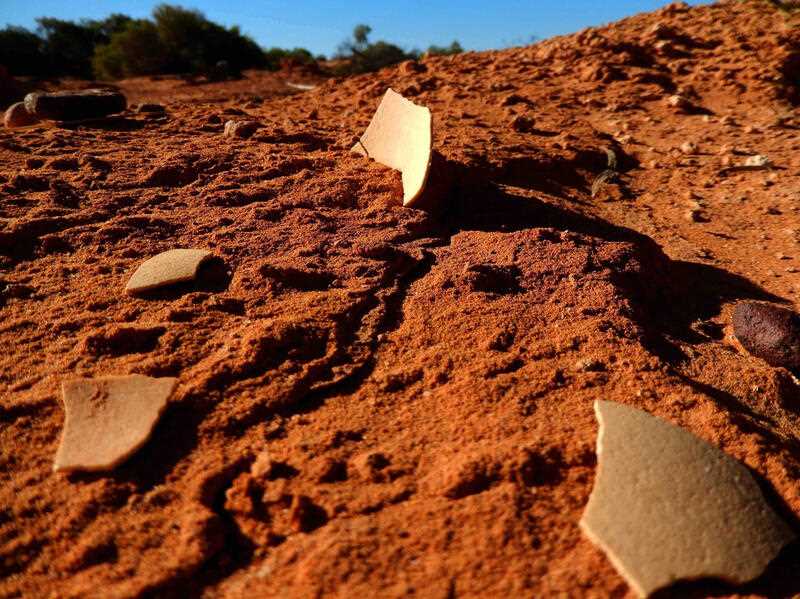Scorch marks on prehistoric shell fragments discovered in sandhills east of Adelaide several years ago quickly sparked theories of Australia’s first inhabitants cooking and eating the eggs of a long-extinct bird.
It made perfect sense but what of the species that laid them?
The shape and thickness of the petrified remnants initially suggested they belonged to a larger, more chunky distant relative of the malleefowl or brush turkey known as the Progura, which died out 11,000 years ago.
But not so.
International researchers using a protein extraction process have since learned the eggs were in fact deposited by the far more famous Australian megafauna species, the thunderbird Genyornis.
Significantly, the 2m tall, 220kg giant vanished around 47,000 years ago – not long after human arrival.
The burnt shells from the previously unconfirmed species date to 50-55 thousand years ago – not long before Genyornis’ departure and by which time people had spread over the landmass.
There is no evidence of butchery in the archaeological record, says research co-leader Professor Gifford Miller from the University of Colorado.
“However, eggshell fragments with unique burn patterns consistent with human activity have been found at different places across the continent,” he said.
“This implies the first humans did not necessarily hunt these enormous birds but did routinely raid nests and steal their giant eggs for food.
“Over-exploitation of the eggs by humans may well have contributed to Genyornis extinction.”
The initial aim of the research was to show which species owned the shell fragments by pulling ancient DNA from them but not enough genetic material survived the hot Australian climate.
Prof Miller turned to colleagues at Cambridge and Turin universities to explore a relatively new technique for extracting the protein.
They were then able to compare the sequences in ancient proteins to those of living species using a vast new database of biological material.
As a result, the Progura was definitively ruled out and Genyornis left as the only candidate.
The 50,000-year-old eggshell tested for the study came from an archaeological site at Wood Point in South Australia but similar burnt shells can be found at hundreds of locations on Western Australia’s Ningaloo coast.
The egg exploitation behaviour of the first Australians likely mirrors that of early humans with ostrich eggs, the shells of which have been unearthed at sites across Africa dating back at least 100,000 years.



